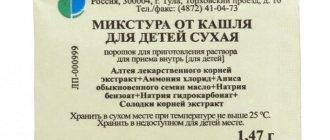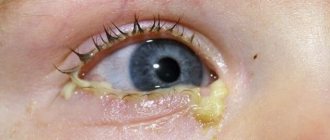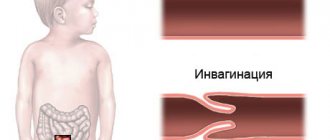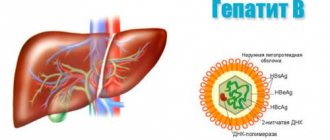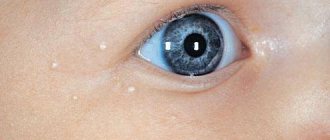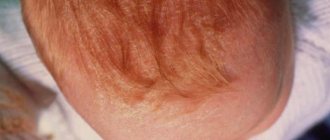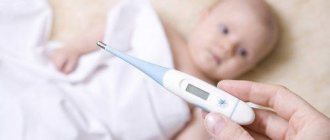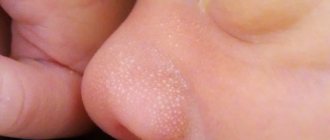Bifidumbacterin is a drug based on living microorganisms that are beneficial to the intestinal environment. The second relatively new name for living bacteria is probiotics. The specific composition of the drug helps restore normal activity of the gastrointestinal tract and strengthens the innate immune system. Bifidumbacterin treats intestinal infections and disorders of the digestive system, with its help they increase the protective barrier of the body, weakened due to stress and frequent colds. If you want to know the features of using Bifidumbacterin powder, this article is just for you.
Dosage forms of Bifidumbacterin
The pharmaceutical industry offers several types of Bifidumbacterin. All of them are modifications of the same medicine, only available under different trade names.
Various versions of the drug are presented in several dosage forms:
- pills;
- capsules;
- dry powder for dilution;
- powder in ampoules and vials;
- lyophilisate for preparing a solution;
- concentrated solution for internal use;
- rectal and vaginal suppositories;
- rectal suppositories for children.
Powder in bags Bifidumbacterin forte: general information
Bifidumbacterin forte is an immunobiological agent with an antidiarrheal effect. The active components of the drug confidently cope with various disorders of the intestinal microenvironment. The medicine is available in powder form. The color of the medicinal substance can vary from grayish to dark gray with black or beige dots (admixture of coal particles), and there is a faint sour-milk odor. The drug is packaged in cardboard packages of 10 or 30 packets. Each package contains exactly 5 medicinal doses.
The active substance is bifidobacteria absorbed by activated carbon. Their number is measured in colony-forming units (CFU), which indicate the approximate number of live bacteria that will multiply and colonize the intestinal microflora. 1 sachet of powder contains 5 x 107 CFU. Lactose monohydrate is used as an excipient in Bifidumbacterin.

Bifidumbacterin powder in sachets is measured in 1, 3, 5 or 10 doses. Therefore, when a doctor prescribes a drug to a patient to treat a particular disorder, he operates with precisely this concept. So, if the rules of administration say that Bifidumbacterin should be taken 15 doses per day, then during the day so many sachets are drunk so that the total amount of powder is equal to 15 doses (that is, 3 sachets of powder).
The drug has proven itself to be a safe and effective remedy. Its use is allowed for newly born children, expectant mothers, breastfeeding women, and the elderly.
Composition and benefits of Bifidumbacterin during lactation
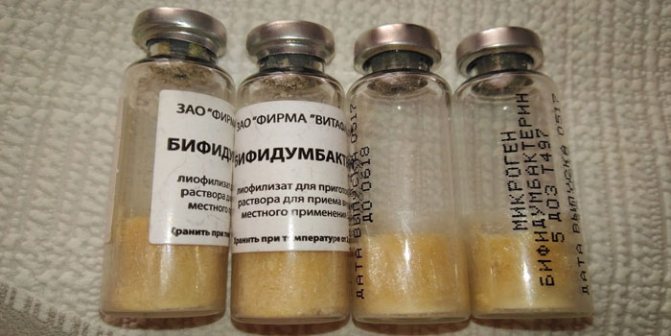
Bifidumbacterin is a drug whose active ingredient is bacteria beneficial to the body in the form of a dry mass. For the best absorption of bacteria, that is, to maintain their vital activity in the digestive tract, the drug contains auxiliary components (lactose).
Important! The human body contains many bacteria that are of enormous importance for human health. When their balance is disturbed, functional malfunctions in the functioning of various systems occur, and then organic pathologies occur.
The drug not only maintains the balance of beneficial bacteria in the body, but also effectively fights dangerous microorganisms: E. coli, Shigella, staphylococcus and yeast.
The product is available in various forms:
- Powder.
- Ampoules.
- Liquid concentrate.
- Pills.
- Vaginal suppositories.
[adsp-pro-2]
The first three forms (powder, ampoules, solution) contain 5 doses of bacteria necessary for humans, the last two (tablets, suppositories) contain 1 dose each. Depending on the purpose of administration, age and well-being of the patient, the number of doses may vary.
Bifidumbacterin stimulates increased production of vitamin K, which is necessary for both the mother and her newborn baby: for metabolic processes, digestion and skin condition. The probiotic also improves the absorption of food, so the baby receives from mother’s milk a sufficient amount of B vitamins, which are involved in the formation of the nervous system.
For the nursing mother herself, a course of the drug, if indicated, is useful due to the elimination of inflammatory processes, improvement of digestion and elimination of toxins. The correct balance of bacteria allows the body to recover faster after childbirth.
[adsp-pro-3]
During lactation, Bifidumbacterin is allowed for use according to the instructions. But it is important to know how to take it correctly so as not to harm your health and the well-being of your baby.
Therapeutic effect of Bifidumbacterin forte powder in bags
Bifidumbacterin provides our body with an invaluable service - during the treatment process, the intestines receive beneficial bifidobacteria, which make up up to 90% of healthy microflora. Against this background, remarkable therapeutic changes appear:
- Taming the vital activity of pathogenic or opportunistic bacteria, restoring a healthy balance of intestinal microflora.
- Normalization of the ratio of beneficial and dangerous microbes, which prevents frequent exacerbations of dysbiosis.
- Stimulation of the synthesis of substances necessary for the body (vitamins K and PP, folic acid, biotin) due to the activity of bifidobacteria.
- Reducing cholesterol in the blood due to the decomposition of harmful bile salts.
- Improving the functioning of the gastrointestinal tract (elimination of diarrhea and constipation, bloating, increased gas formation in the intestines).
- Rapid elimination of symptoms of poisoning by stimulating the body's local defense reaction.
- Suppression of the vital activity of Helicobacter pylori, thereby extending the period of weakening of the signs of gastritis and stomach ulcers.
- Renewal of intestinal microflora after long-term antibiotic therapy.
- Elimination of diarrhea that appears as a result of acute intestinal infection.

Indications for treatment with Bifidumbacterin forte powder in bags
A probiotic is prescribed in the following cases:
- Prevention and elimination of disorders of the digestive system due to the use of antibacterial drugs, infectious lesions, stress, etc.
- Prevention and elimination of intestinal microflora disorders, which are caused by diseases of the gastrointestinal tract (stomach ulcer, hepatitis, pancreatitis).
- Comprehensive program to eliminate allergies.
- The whole range of acute infectious intestinal diseases.
- Food poisoning.
- Malabsorption syndrome.
- Frequent constipation or diarrhea.
- Pneumonia, bronchitis.
- Inflammatory diseases of the genitourinary system.
- Rehabilitation after surgical treatment of the intestines, liver, pancreas.
- Preventive support for people prone to frequent colds.
- Preparing expectant mothers for childbirth.
- Artificial feeding of children.
- Complex treatment of rickets in infants.
- Infection with worms and other parasites.
- Comprehensive support for the body during a diet.
- Restoring the “working” state of the gastrointestinal tract, disturbed by a sudden change in the usual diet.
- Relieving hangover.
- As a strengthening agent in conditions of severe stress, severe physical or psychological stress.

2.3. Proper nutrition of the mother during breastfeeding using bifilact BIOTA.
The state of the intestinal microflora of a nursing mother directly affects the health of the baby, because affects the quality of milk, the content of immune bodies in it to protect the baby, the presence or absence of harmful metabolic products in milk, etc. Pregnancy and childbirth can lead to dysbiosis - a disruption of the content of normal microflora (bifidumbacteria and lactobacilli) in the gastrointestinal tract of the mother , which entails big problems with the health of children. Therefore, proper nutrition of a nursing mother and restoration of intestinal microflora are the most important factors in the health of the baby. The use of bifilact BIOTA in the diet of a nursing mother will help to form normal microflora for both the baby and the mother.
- bifilact "BIOTA" is absolutely necessary for the maintenance and formation of normal microflora, 2-3 glasses a day 20-30 minutes before meals. If there is a tendency to constipation, then bifilact BIOTA can be diluted with mineral water (still - Slavyanovskaya, Essentuki 17, Essentuki 4), or juice (children's apple juice). You can also include BIOTA sour cream with bifidumbacteria in your diet.
- The remaining products should ensure easy digestion and a low allergenic load in order to minimize the processes of fermentation and putrefaction in the digestive tract of a nursing woman, and the release of toxins into milk:
- meat - rabbit, nutria, turkey, veal;
- porridge (oatmeal, buckwheat) with water;
- berries and fruits - green apples, bananas (remember that they are fortified and it is better to combine them in half with apples), pears (also combined in half with apples), black currants, gooseberries, blueberries, cherries, blackberries, boiled, stewed lemon (jelly , compotes, purees, bake whole);
- vegetables - potatoes, zucchini, blue zucchini, green bell peppers, onions, squash, zucchini, carrots, Jerusalem artichoke, parsley, dill, broccoli, cauliflower, Chinese cabbage (white cabbage is not allowed), boiled, stewed cucumbers without crust;
- quail eggs (omelet, boiled)
- instead of sugar, you need to use fructose, cooked jam (from the above berries or fruits), boiled sugar syrup;
- sweets from the diabetic department (fructose), marshmallows, oriental sweets, marmalade. Sweets should be very limited;
- Adyghe cheese, low-fat cottage cheese (control manifestations of allergies in the child);
- cookies in diabetic departments;
- green, white tea.
Instructions for use of Bifidumbacterin forte powder
Treatment with the drug is allowed for newborns and people of any age. The probiotic in powder form is taken 20 - 30 minutes before sitting down at the table or during meals. However, if the patient’s diet is not regular, it is permissible not to tie the use of the medicine to food intake.
How to take Bifidumbacterin powder in bags
Immediately before use, the powder must be diluted to a liquid state:
- pour 2 - 3 tbsp. l. (30 - 50 ml) not hot liquid in a small cup or glass;
- pour the specified volume of powder from the bag into the liquid;
- mix the solution with a spoon and drink it immediately or fill a baby bottle with the resulting medicine to immediately give your baby something to drink. The prepared solution cannot be stored.
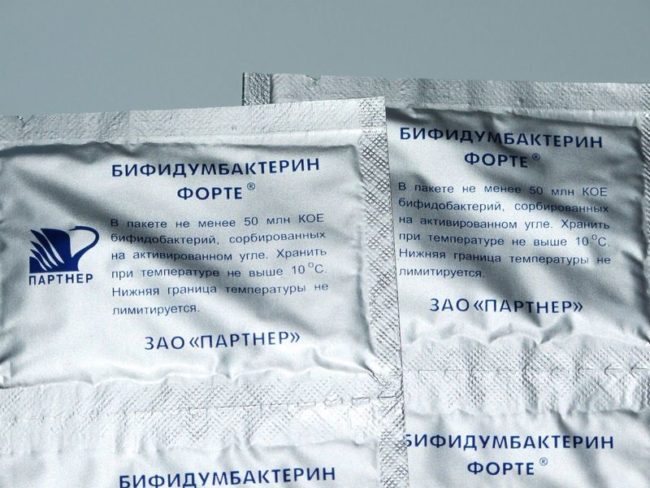
The solvent for Bifidumbacterin powder is usually slightly warm boiled water, milk, liquid formula for artificial feeding, or any fermented milk product. Please note that the powder of living bacteria does not completely dissolve, but forms a cloudy suspension with an admixture of black fragments.
How to dilute Bifidumbacterin powder for children
Another question that always worries parents is how to dilute Bifidumbacterin powder if a child is sick? For this case, there are special recommendations:
- Bifidumbacterin powder in bags for newborns and infants is diluted with lukewarm boiled water, breast milk or an adapted mixture. The optimal amount of liquid is 35 - 55 ml. The finished medicine is given to the baby to drink immediately. Children under 1 year of age are usually recommended to take 1 packet of powder three times a day. The liquid is drawn into a bottle, a small spoon or a syringe without a needle - the mother will figure out for herself how it is easier for her to give the child something to drink.
- Newborns and children under 1 year of age are also prescribed dry Bifidumbacterin in ampoules. The method of using this form of the drug does not differ from the previous one. Considering how many times the doctor prescribed the baby to drink a probiotic, the dry substance of the ampoule is diluted in about 30 ml of breast milk or boiled water, after which the medicine is immediately given to the baby. Most often, the treatment regimen is similar to taking the drug in sachets: 1 ampoule three times a day.
- An immunobiological agent in tablet form is contraindicated in small patients. The use of the medicine in this form is possible from 12 years of age.
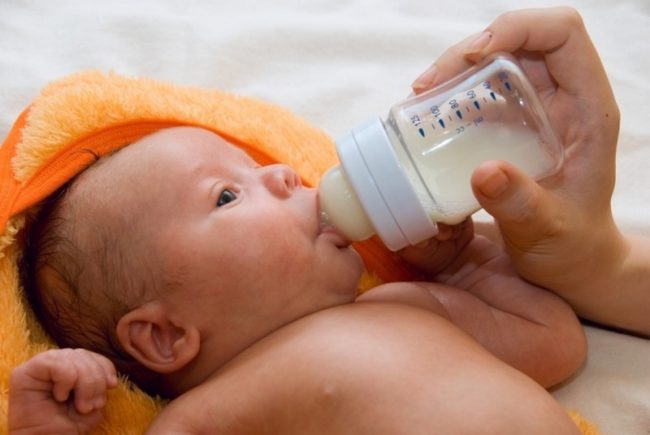
Take note! The prepared solution is offered to the baby during feeding. First, the child is given medicine, and only then milk or formula.
At what age is it permissible to use Bifidumbacterin
This drug can even be used to treat newborns. From the first days of a patient’s life, Bifidumbacterin can already help normalize the functioning of his intestines. Only suppositories are contraindicated for newborns. They can only be used from the age of 3 years. But this does not mean at all that you need to grab Bifidumbacterin whenever you suspect colic or have a bowel disorder. If you suspect that treatment is necessary, be sure to contact your pediatrician! Only he has the right to prescribe any medicine to the newborn. In addition, knowledge and experience will help him choose the optimal dosage regimen for your baby. He will take into account the age, weight of the newborn, how he is fed, what the nature of his stool is, how often bowel movements occur.
The drug has shown its effectiveness in the treatment of newborns, as well as for the prevention of dysbiosis and intestinal infections. As laboratory tests have shown, when entering the aggressive environment of the stomach of an adult, some of the bifidobacteria from the drug die. But in newborns, the acidic environment of the stomach is neutral. Therefore, it is safe for the drug, and almost all bifidobacteria enter the intestines. Bifidumbacterin is often prescribed to newborns for diarrhea or constipation. It quickly eliminates these pathological conditions, as it restores the intestinal microflora, filling it with beneficial bifidobacteria, which immediately populate the mucous membrane of the small and large intestines.
For many parents, colic in a newborn becomes an unpleasant surprise. Although there is no exact data on what exactly causes them, most pediatricians are inclined to believe that the cause of colic is an imperfection of the gastrointestinal tract in newborns. Their stomach and intestines are not yet fully formed. Therefore, such babies often experience regurgitation after feeding, hiccups, and due to insufficient population of beneficial microflora, intestinal upset occurs. To combat colic, constipation and diarrhea, and prevent dysbacteriosis, Bifidumbacterin is often prescribed. Newborns tolerate it well. The main thing is to dilute the drug correctly and give it to the baby right away.
Bifidumbacterin is often prescribed to premature babies. They require especially careful attention to the digestive system. After all, for premature babies it is very important to gain weight as quickly as possible, as well as strengthen the immune system. The drug is also used for newborns born by caesarean section. Due to the fact that after the operation they could not be immediately put to the breast, they may not have received colostrum, which is so important for the digestive tract and nutritious. Often after anesthesia and surgery, the mother does not produce breast milk for a long time. Because of this, the newborn is forced to transfer to artificial feeding. In this situation, it is important to support the tiny organism with beneficial bifidobacteria.
If a newborn has an intestinal infection, he simply needs Bifidumbacterin. It will help cope with harmful bacteria, displace them from the intestines, populating its mucous membrane with beneficial bacteria.
Parents testify that they observed positive dynamics after using Bifidumbacterin. The effectiveness of the drug in the treatment of newborns has also been proven by laboratory studies. It is only important that parents strictly follow the doctor’s instructions, dilute the drug correctly and give it in strict accordance with the prescribed regimen. Diluting Bifidumbacterin is quite simple, but there are some nuances. If the newborn is prescribed less than five doses at a time, then the contents of the bottle must be carefully divided. Part of the powder is poured into a container (for example, a tablespoon) and diluted with water (the amount of water per dose is indicated in the instructions for the drug). It’s even better to dilute the drug with breast milk or formula. The resulting suspension should be given immediately before feeding. There is no need to drink it. Make sure your baby drinks everything, without any traces. As we already mentioned, you cannot store diluted powder. If anything is unclear, be sure to consult your doctor. Also read the instructions carefully. It details how to dilute the drug for newborns and according to what schedule it should be given.
The duration of the treatment process may vary. It depends on the severity of the disease and the characteristics of the baby’s body. If the drug is used for prophylaxis, the doses will be smaller, but they need to be taken over a longer period. For acute intestinal infections, treatment may take up to a week, but the doses will be higher. It is important that the newborn receives the drug when his stomach is completely empty, immediately before eating or 30 minutes before. Then bifidobacteria will not linger too long in the stomach, but will quickly enter the intestines. There will be no loss in their numbers. At least an hour must pass since your last meal. You can also take this remedy at night, before going to bed.
Some medications are recommended to be added to the mixture. Is it possible to mix Bifidumbacterin with the mixture? According to pediatricians, this is quite acceptable. But it is important to understand that this may reduce its therapeutic effect somewhat. The fact is that if it enters the stomach along with the mixture, some of the bifidobacteria may not survive, because they will stay there longer than in an empty stomach.
How to drink Bifidumbacterin powder: dosing features
The severity of the disease affects the dose of the drug, which can be normal or increased.
The usual doses of Bifidumbacterin forte prescribed for therapeutic purposes are as follows:
- 1 sachet 2 - 3 times a day - for newborns and infants;
- 1 sachet 3 - 4 times a day - for children aged 1 year and older;
- 2 packages 2 - 3 times a day - for adults.
The duration of treatment also depends on the nature of the disease. For example, symptoms of acute intestinal infections and food poisoning recede after 5–7 days of treatment with a probiotic; in other cases, the course is extended to 15–21 days. Treatment can be multi-stage, that is, repeated 2-3 times with an interval of 1 month.

Increased doses of Bifidumbacterin forte for medicinal purposes are indicated for children over 1 year of age and adults.
Dosages for intestinal infectious diseases and ARVI are as follows:
- 5 sachets 6 times a day - children;
- 10 sachets 3 times a day - adults.
The duration of treatment is limited to 1 - 3 days.
For recurrent gastrointestinal pathologies, the treatment regimen with increased doses of probiotics is somewhat different:
- 5 sachets 1 - 3 times a day for 2 weeks - for children;
- 10 sachets 1 - 3 times a day for 2 weeks - for adults.
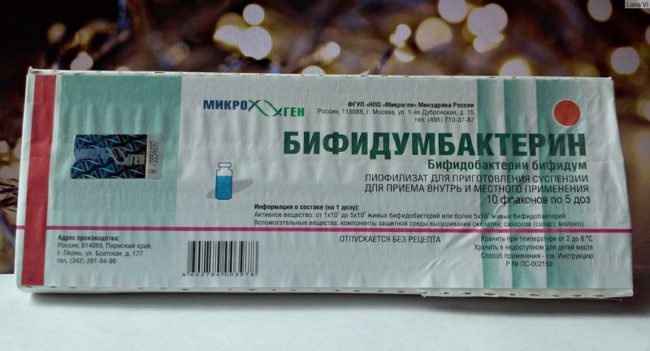
Treatment with Bifidumbacterin powder in sachets is also practiced for prophylactic purposes:
- 1 sachet 1 time per day - for babies under 1 year;
- 1 - 2 sachets 1 - 2 times a day - for children from 1 year old and others.
In this case, the medicine is taken for 14 days up to 2 - 3 times a year.
How to dilute bifibumbacterin for newborns?
As you know, sometimes newborns will need “help” in the form of beneficial bacteria for the digestive system if their gastrointestinal tract has been colonized by opportunistic flora. As a result of this, the baby often cries, burps, bloating occurs, and the child suffers from gas and colic. In some cases, doctors prescribe such an effective drug as bifidumbacterin, which contains live bifidobacteria, which are normally part of the gastric microflora. But for many inexperienced mothers, it is completely unclear how to dilute bifidumbacterin for newborns. We will try to help!
Bifidumbacterin - method of application for newborns
In general, this drug can be found in several forms: dry and liquid. The first form is available in the form of tablets and powder in bags, ampoules, and bottles. True, only powder is allowed for babies. Bifidumbacterin liquid for newborns is available in bottles.
How to give bifidumbacterin to a newborn?
It is clear that the method of treating a child’s microflora with this probiotic and its dosage directly depends on what form of release you purchased.
In general, the medicine can be given before feeding. If you use dry bifidumbacterin for newborns in vials, you must first prepare a suspension. To do this, pour boiled water at room temperature into a glass at the rate of 5 ml for each dose of the drug. As a rule, the number of doses is indicated on the package. After opening the bottle, a small amount of water is poured into it from a glass to dissolve. Then the contents of the bottle should be mixed with water in a glass. 1 teaspoon will contain 1 dose of medicine. If desired, breast milk or formula can be used instead of water to dissolve. The dosage of bifidumbacterin for newborns is 5 doses at a time, twice a day. Please note that the prepared suspension cannot be stored!
Regarding how to dilute bifidumbacterin for newborns in the form of powder in bags, the solution is prepared in the same way as from the bottle. The bag contains 5 doses, for each of which you need to take 1 teaspoon of water or milk. The dosage of the medicine is one sachet of powder 2-3 times a day.
Bifidumbacterin liquid is produced in the form of a concentrate of bifidobacteria. There is no need to prepare the solution - the medicine is already ready for use. The bottle of the drug should be shaken well before use. Newborns are given 0.5-1 ml of the product 2-3 times a day.
In any case, when deciding to use bifidumbacterin for newborns for colic, dysbiosis or prevention of these conditions, be sure to consult with your pediatrician!
Bifidumbacterin forte powder in bags: side effects and contraindications for use
All forms of the drug are well tolerated by patients of all ages. This does not apply to people with individual intolerance to the active substances of Bifidumbacterin. Medicine in the form of tablets and capsules is not prescribed to children under 3 years of age. In medical practice, cases of allergies developing during probiotic treatment have been reported. In this case, the drug should be stopped immediately.

Indications for use
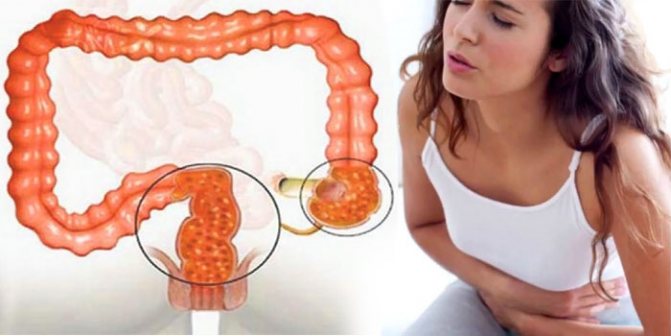
To understand whether a nursing mother can take Bifidumbacterin, you need to read the instructions for the drug. The main indications for taking the drugs are:
- Dysbacteriosis.
- Functional gastrointestinal disorders of various etiologies.
- Chronic inflammation of any part of the intestine.
- Acute infections.
[adsp-pro-4]
Together with other drugs, the drug can be used against the background of pneumonia and blood poisoning. Sometimes the medicine is prescribed for colon cancer.
For a young mother, Bifidumbacterin can be used externally during breastfeeding to treat mastitis. You should take Bifidumbacterin concentrate in its pure form, apply it to a cotton pad and lubricate the nipple area half an hour before feeding. In 5 days, 2 ampoules of the product are consumed.
For dysbacteriosis during breastfeeding, Bifidumbacterin is used intravenously. If the digestion process is not adjusted, this will have a bad effect on the mother’s well-being: her intestines will have impaired absorption of nutrients from food, and her general tone and emotional state will change. This will also be reflected in the well-being of the baby, for whom breast milk is the main source of nutrition.
It is known that timely treatment helps to minimize the occurrence of the following phenomena:
- Decreased immunity.
- Heartburn.
- Colic and constipation.
- Allergic reactions.
[adsp-pro-5]
Bifidumbacterin forte powder in bags: reviews
Almost all reviews (approximately 90%) regarding treatment with Bifidumbacterin Forte powder give the drug a positive rating. People without any doubt characterize the drug as an effective and safe medicine, thanks to which intestinal function improves in a matter of days. The drug is especially helpful for digestive disorders with a list of symptoms such as bloating, gas in the intestines, diarrhea, and constipation. Agree, the result of taking beneficial bacteria powder - good health and a high quality of life - is nothing but pleasing.
Although in the overwhelming minority, there are also negative reviews about Bifidumbacterin powder in bags. They are left by people who hoped that this medicine would completely eliminate the painful symptoms of their illness, but did not receive the full positive effect.
Directions for use and dosage during breastfeeding

How to take Bifidumbacterin for a nursing mother should be decided by her attending physician. Despite the invaluable benefits of the drug, it can be harmful if the correct dosage is not selected. There is no need to stop breastfeeding during the course of therapy.
A nursing mother can take Bifidumbacterin if indicated, 5 doses three times a day. The duration of treatment ranges from 2 to 12 weeks. You need to focus on your feelings, but you should not interrupt therapy immediately when an improvement appears, when the stool has returned to normal, and the discomfort in the abdomen has disappeared.
Important! The long duration of the course of drug therapy is due to the fact that no more than 10% of the bacteria taken take root. You can speed up the healing process by changing your diet.
For the purpose of prevention, the duration of the course and frequency of administration should be reduced: you should drink 5 doses twice a day for 2 weeks.
Treatment of newborns with Bifidumbacterin while breastfeeding can be carried out under the supervision of a pediatrician in the following dosage:
- Up to six months of age: 1 dose three times a day.
- 6-12 months: 3 doses twice daily.
- After 1 year – 5 doses 2 times a day.
[adsp-pro-6]
For prophylaxis, the baby does not need to be given the drug. If the mother's microflora is normalized, beneficial bacteria from the mother's intestines are transported into breast milk.
Important! The drug diluted in water, as well as an ampoule or an opened bag of powder, must be consumed within 24 hours or disposed of.
